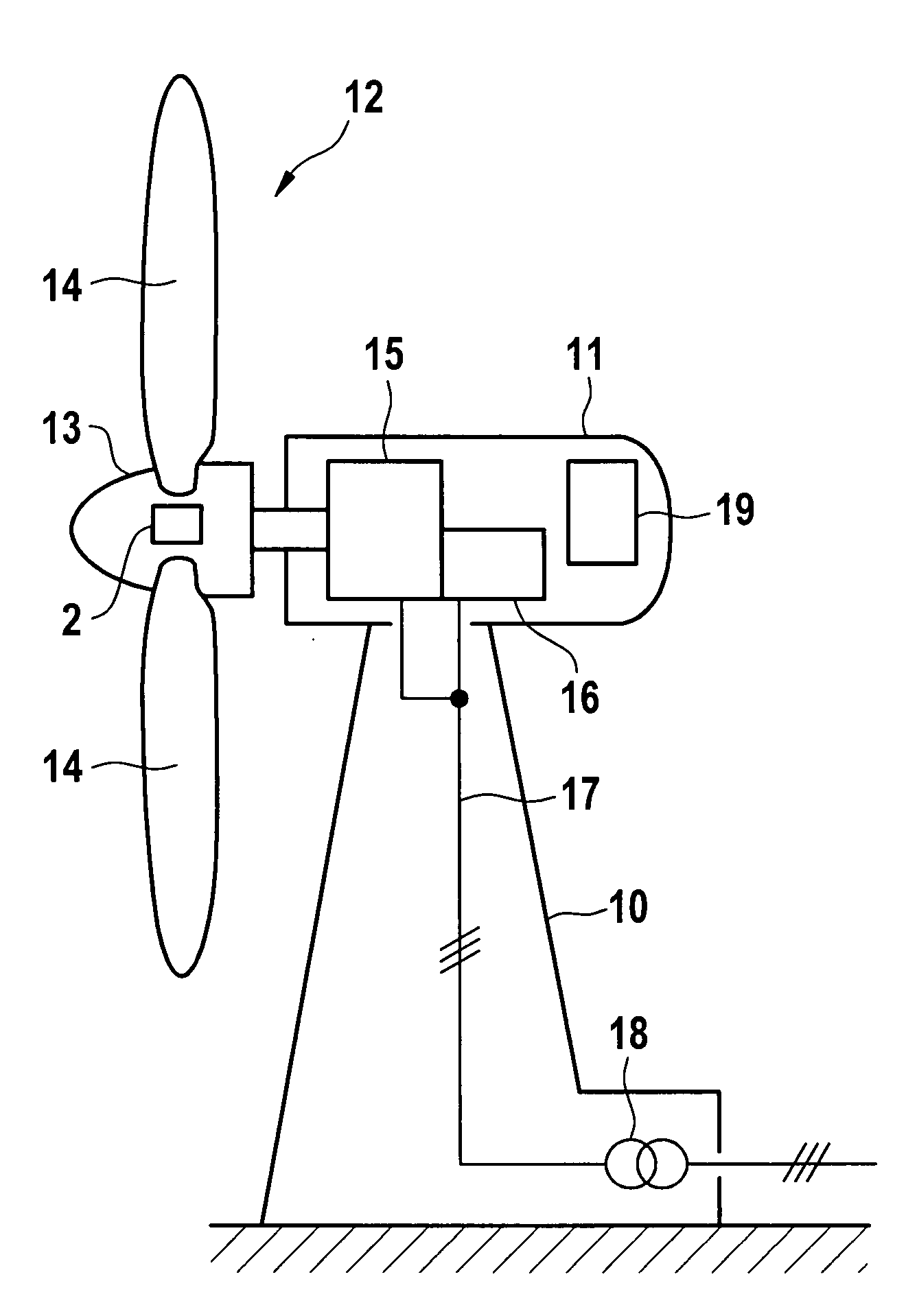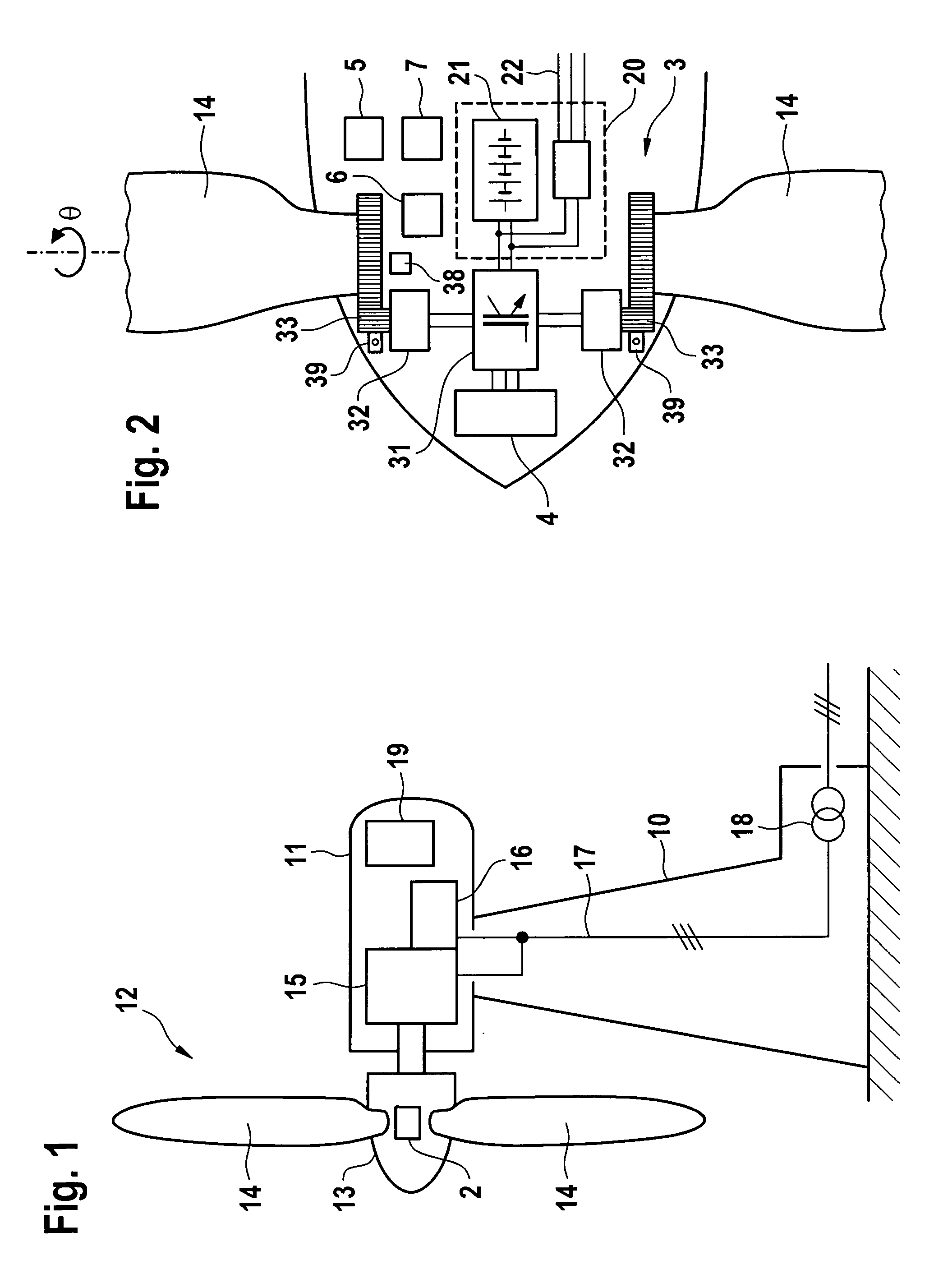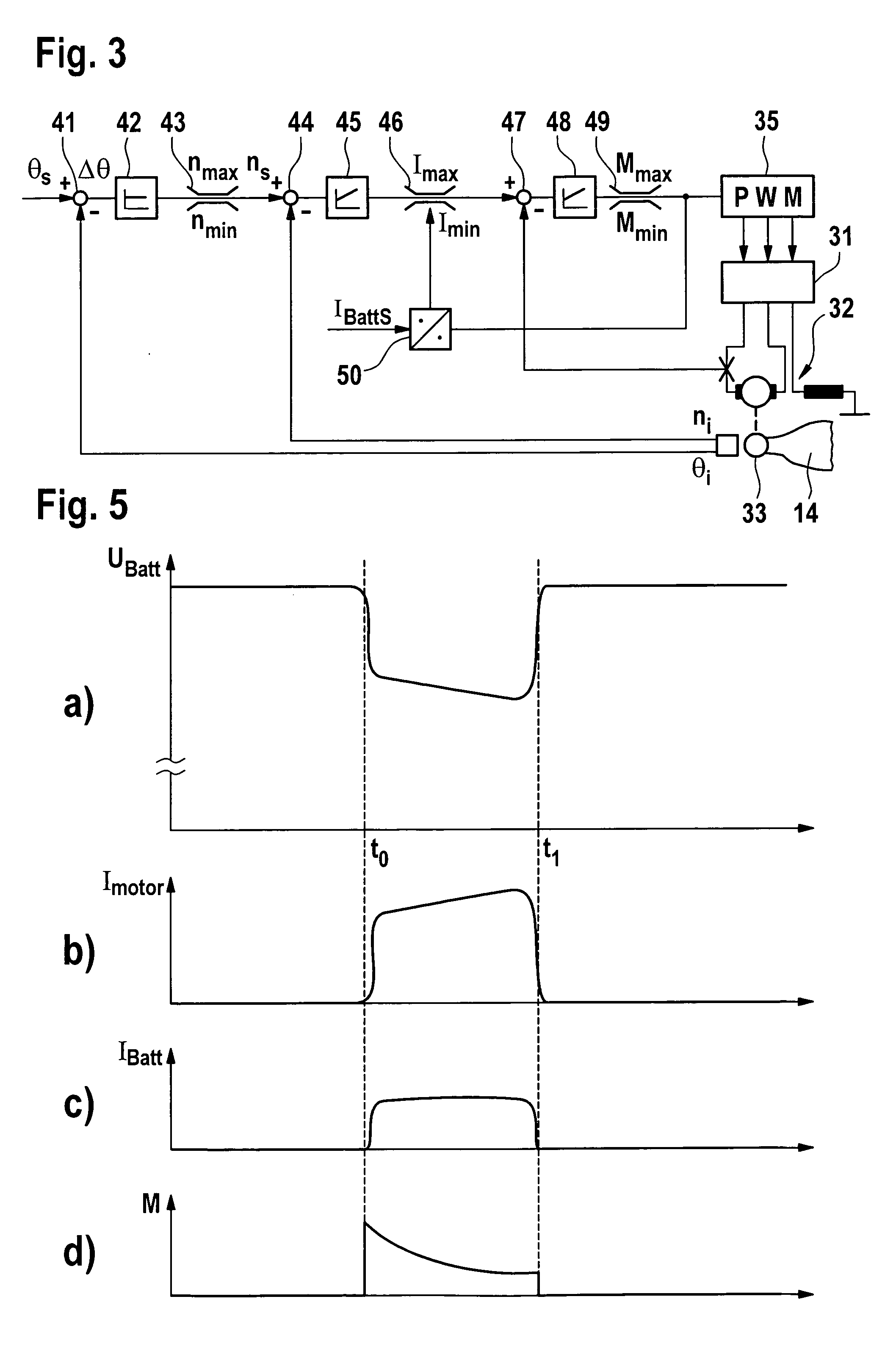Monitoring device for pitch systems of wind energy systems
a technology of monitoring device and wind energy system, which is applied in the direction of electric generator control, instruments, machines/engines, etc., can solve the problems of wear and tear of parts that are subject to the same disadvantage, and achieve the effects of reducing the complexity of hardware, reducing the burden, and reducing the burden
- Summary
- Abstract
- Description
- Claims
- Application Information
AI Technical Summary
Benefits of technology
Problems solved by technology
Method used
Image
Examples
Embodiment Construction
[0033]According to one exemplary embodiment of the invention, a wind energy installation has a pod 11, which can be pivoted in the azimuth direction on a tower 10 and on whose end face a wind rotor 12 is arranged such that it can rotate. The wind rotor 12 has a hub 13 and one or more rotor blades 14. It drives a generator 15 via a rotor shaft (which is not illustrated). This generator converts the mechanical power produced from the wind by the wind rotor 12 to electrical power. The generator 15 is a doubly-fed asynchronous machine (however, it is also possible to provide other types of generator). This generator 15 is connected to a converter 16. A line 17 is connected to the generator 15 and to the converter 16, and transports the electrical power that has been produced through the tower 10 to a medium-voltage transformer 18, which is arranged at the foot of the tower 10, for passing on into a power supply system (not illustrated). An operating control system 19 is also arranged in...
PUM
 Login to View More
Login to View More Abstract
Description
Claims
Application Information
 Login to View More
Login to View More - R&D
- Intellectual Property
- Life Sciences
- Materials
- Tech Scout
- Unparalleled Data Quality
- Higher Quality Content
- 60% Fewer Hallucinations
Browse by: Latest US Patents, China's latest patents, Technical Efficacy Thesaurus, Application Domain, Technology Topic, Popular Technical Reports.
© 2025 PatSnap. All rights reserved.Legal|Privacy policy|Modern Slavery Act Transparency Statement|Sitemap|About US| Contact US: help@patsnap.com



